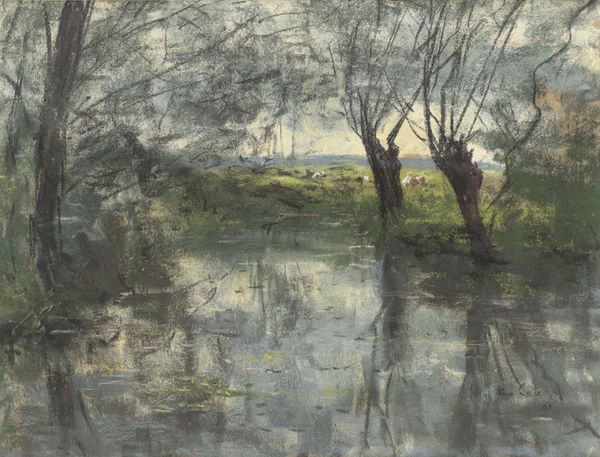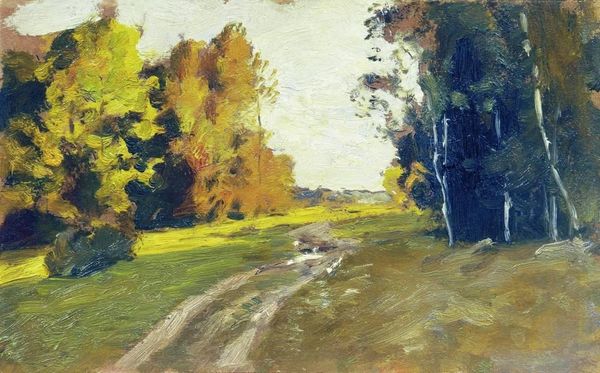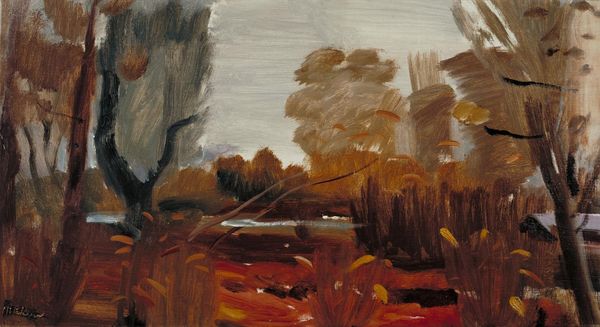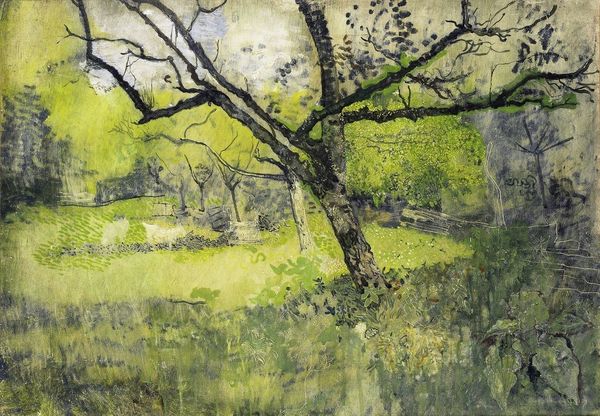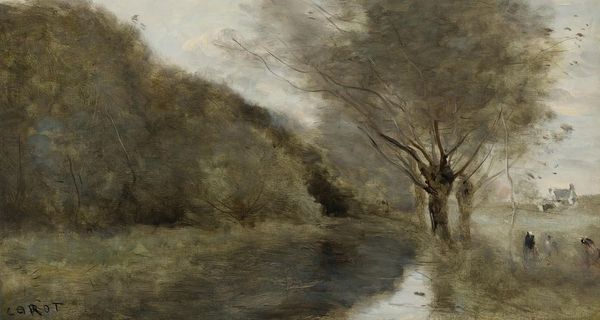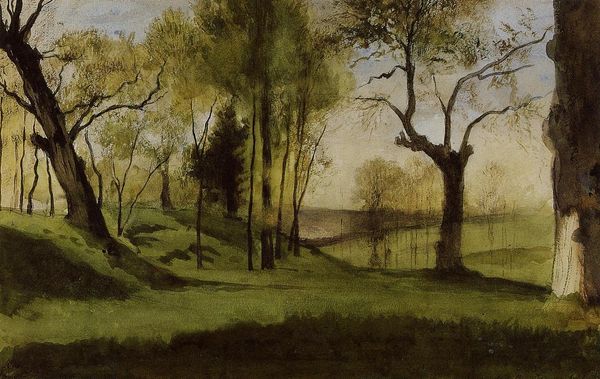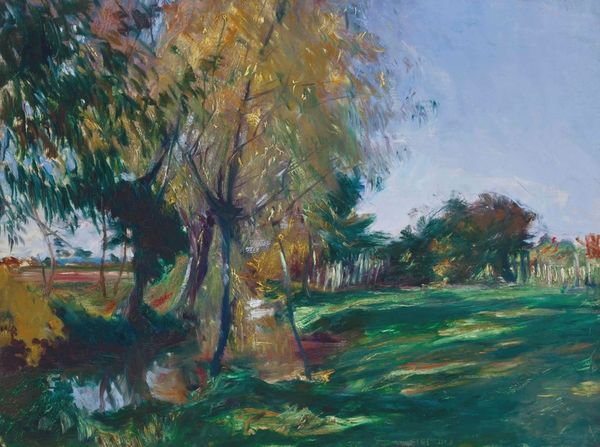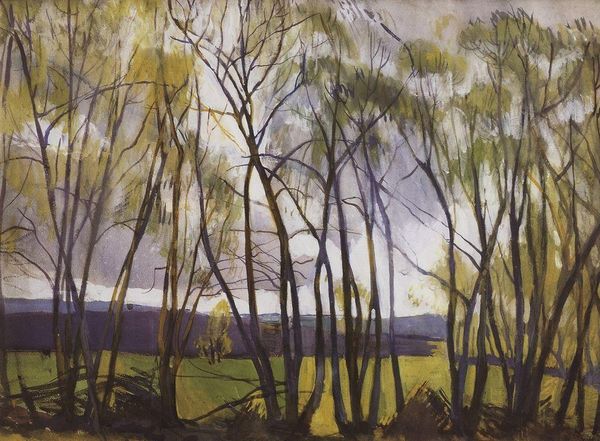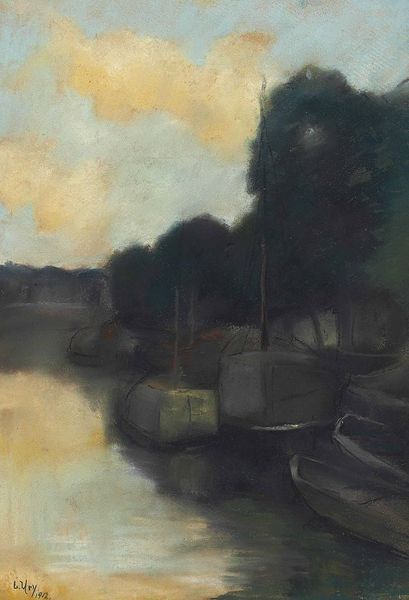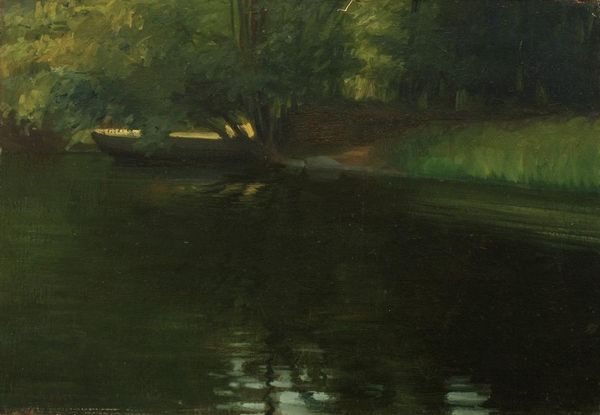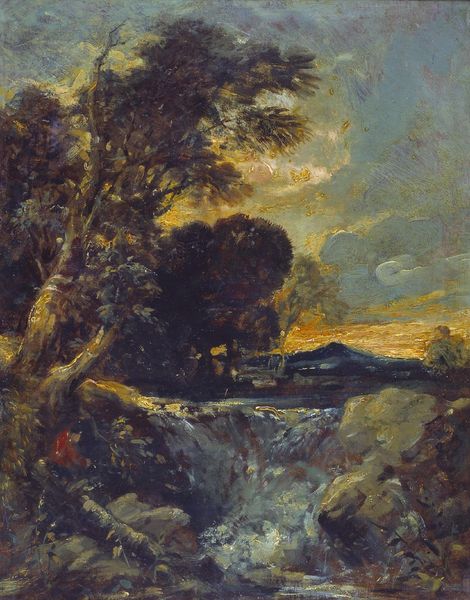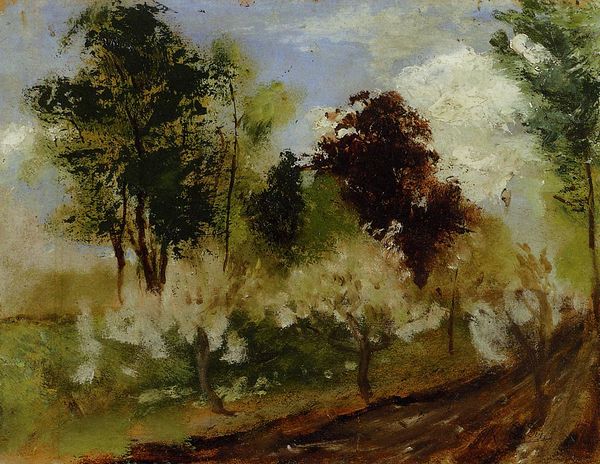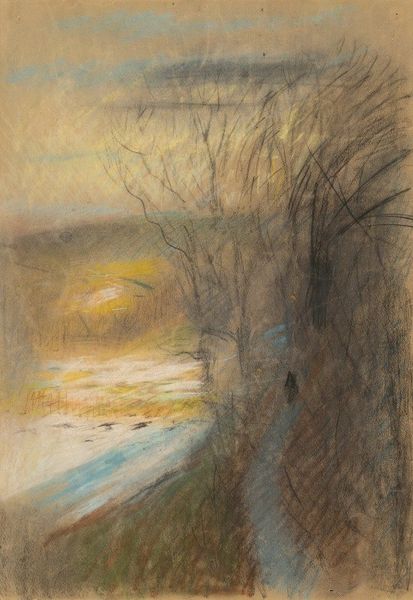
Copyright: Public domain
Editor: This is "Herbstliche Bachlandschaft im Abendlicht," or "Autumnal Brook Landscape in the Evening Light," painted by Lesser Ury around 1900. It's stunning—a hazy scene with blurred edges and soft colors, very dreamlike. What do you see in this piece? Curator: Well, immediately, I'm drawn to the cultural memory embedded within the imagery. Water, the brook, often symbolizes the passage of time, right? And coupled with the autumn setting, we're looking at a powerful metaphor for the transient nature of life. The softening light suggests the fading of memory itself. Do you notice how the reflections blur the line between reality and a mirrored, perhaps idealized, past? Editor: That's interesting. I hadn’t thought about the reflections that way. I was more focused on the very obvious melancholic mood—all the browns, yellows and faded greens, as a classic element of the Romantic era landscapes. Curator: Exactly. Colors and the season connect it to a deep well of human emotions. And those Impressionistic strokes further abstract reality, inviting subjective interpretation. How does that abstraction impact the viewer's experience, do you think? Editor: It feels more personal, almost as if the landscape becomes a mirror for my own feelings of nostalgia or perhaps loss. Curator: Precisely. The symbolism, combined with the artist’s technique, creates an artwork layered with emotional and psychological depth, inviting us to consider our own place within the cyclical flow of time. Editor: This really highlights how much more there is to a landscape than just pretty scenery. I see the cultural context in such a striking image now. Curator: Agreed! Symbols whisper stories, connecting us to cultural and emotional knowledge built over centuries. There’s always more to discover.
Comments
No comments
Be the first to comment and join the conversation on the ultimate creative platform.
